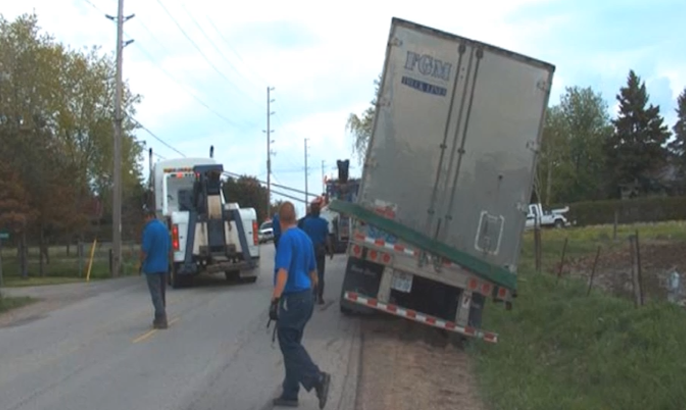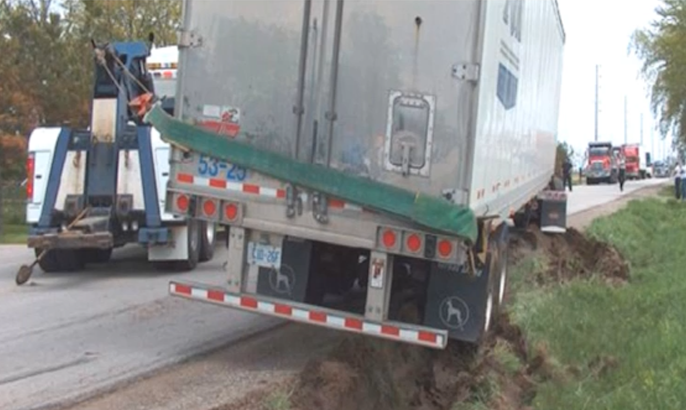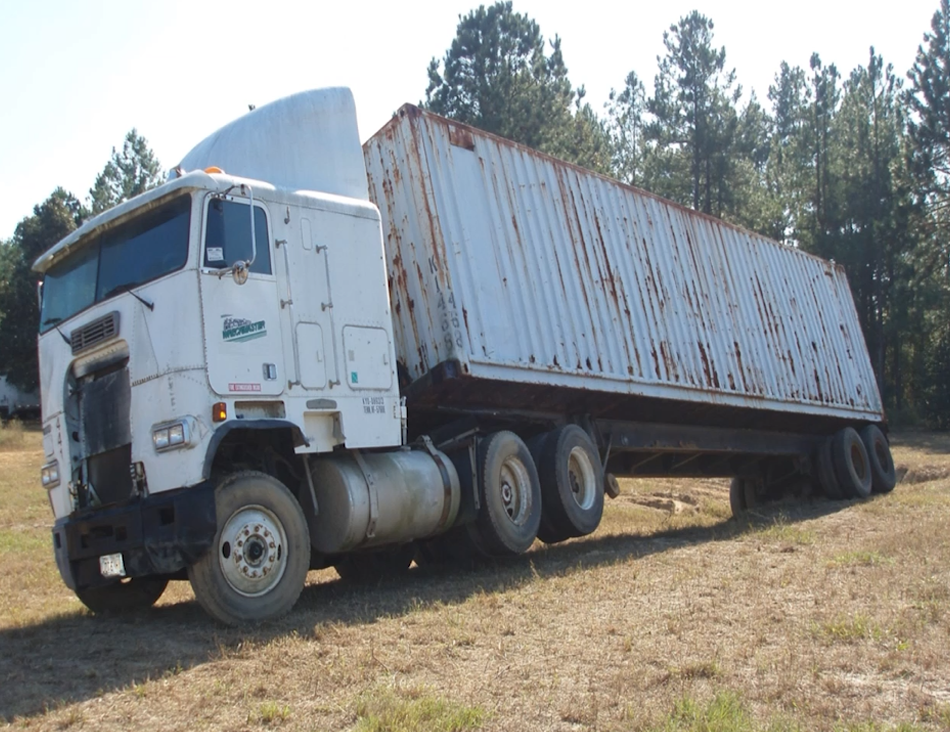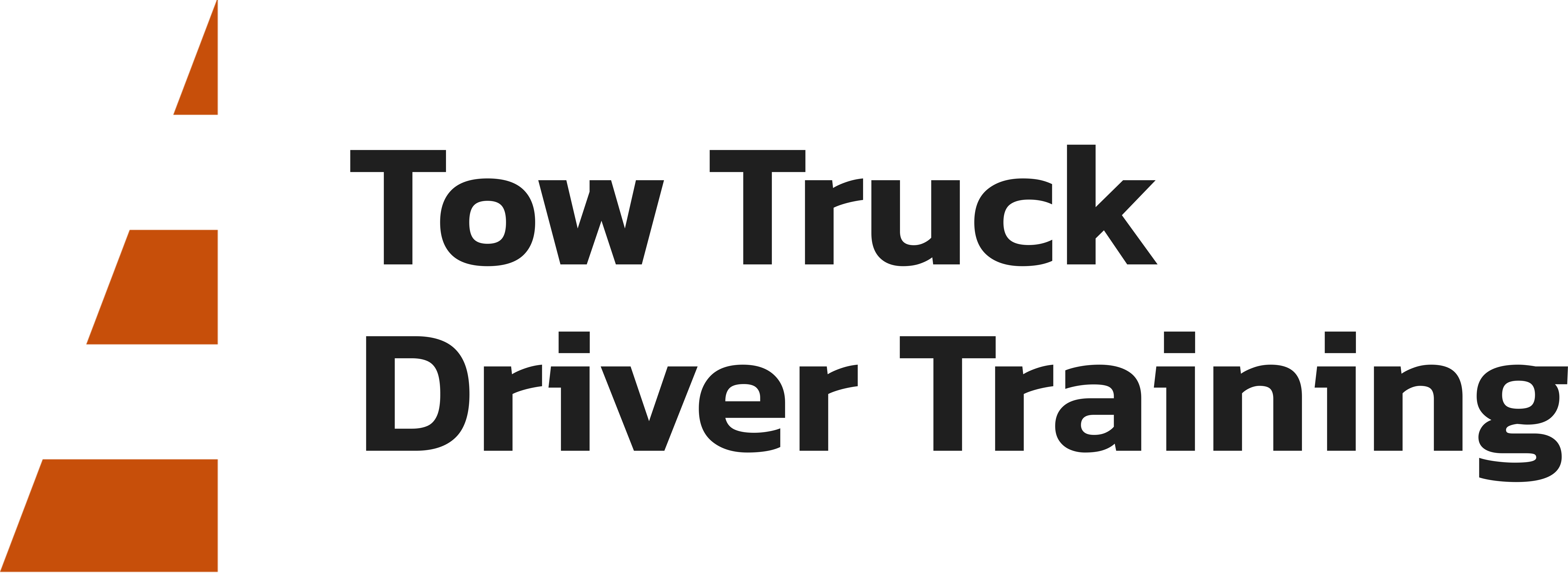HD Intro and Winch Upright
Our first scenario is a tractor and trailer commercial vehicle in a ditch. We refer to this affectionately as ‘The Leaner’. In this case you’ll notice that as you arrive the loaded commercial vehicle is leaning one direction or the other. Oftentimes the tractor-trailer is backed itself into a ditch by its driver and as the trailer begins to lean, the weight transfers from the high side to the low side. The result of this is a loss of traction on the drive axle of the tractor. It’s not ready to turn over yet, but the tractor-trailer simply can’t be driven forward because of the loss of traction. In this scenario, that operator has a choice. A choice to place a strap over top of the trailer and risk rail damage while trying to pull the tractor trailer forward.
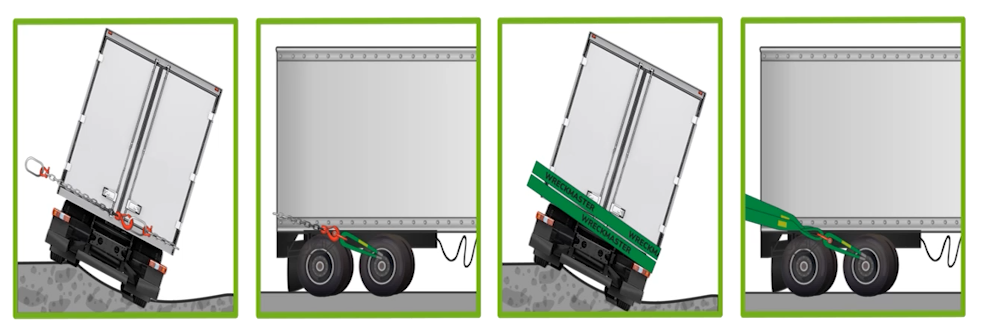
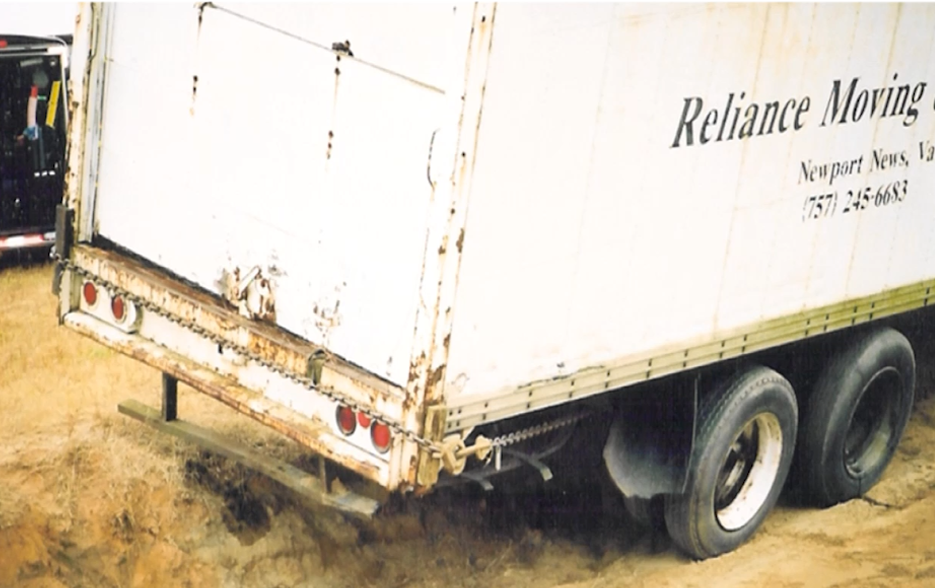
I’d like to offer an alternate method you refer to as the tail wrap technique. Before any winching or rigging is installed, we first need to identify the casualties static weight and calculate its resistance to make sure that any rigging we install and any winching we perform will remain within its working load limits.
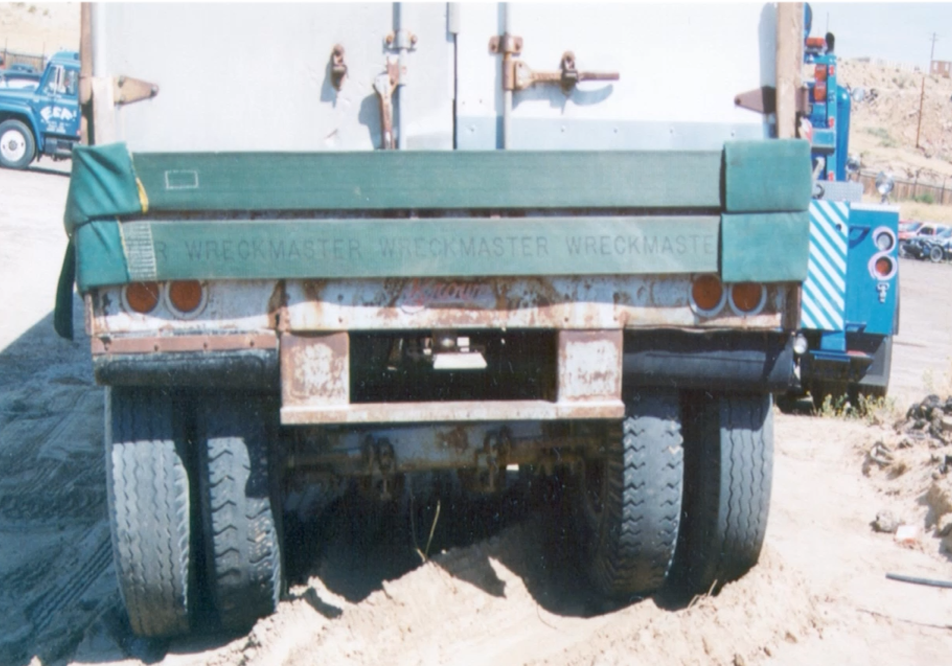
To install the tail wrap rigging an operator would select the appropriately sized and grade chain or strap, and attach the rigging to the rear of the trailer. You have options here: You can locate rigging on the opposite side trailer tires or wheels- the low side. You can install chain on the trailer frame.
The next piece of rigging to attach is either long chains or long straps that allow the anchorage to proceed from the low side of the trailer all the way around the back doors of the trailer. You remember from earlier conversations that a trailer strength is found in its corners. One of the strongest parts of the trailer is the rear door area where the door frame needs the floor. We’re going to focus on this area for all recovery rigging. Any straps or chains that we wrap around the back of the trailer, should be located right at the floor area of the trailer itself. This rigging that’s connected to the low side of the trailer passes around the back side of the trailer, focusing the force at the floor level, then comes out on the high side of the trailer.
Positioning of the tow truck is critical on this recovery proper positioning will lead to a most successful outcome. To properly position until truck to overcome the resistance of the leaner for every foot away from the casualty laterally, we’re going to move the tow truck 2 feet ahead. We’re observing a 2:1 rule for this particular recovery.
Let’s say we positioned the tow truck 10 feet away from the side of the casualty, (we want to be 20 feet ahead of that location). We also want to make sure we have sufficient distance in the winching layup to completely winch the casualty forward and to the side out of the ditch. This may mean positioning your tow truck is far ahead isn’t the cab of the tractor and trailer.
When winching commences, the tow truck will pull the casualty forward out of the ditch, and as it nears the back of the tow truck it will begin overcoming damage resistance and sliding the casualty towards the road. If this technique is successful, the installation on the rear of the trailer does not allow the trailer to turn over. It prevents the need to place the strap over top of the trailer which could result in crushing or damage to the top rail. This particular technique is quite useful in winching a tractor-trailer straight-ahead out of a ditch.
Have a look at some of these photographs. First we see a conventional tractor couple to a 53-foot dry van trailer either the driver of the tractor-trailer turn too short or maybe even backed into the ditch, the result is the drive axles of the semi tractor being lifted off of the ground. It simply has no more traction to pull ahead. In this case, placing a strap over top of the trainer to prevent it from turning over could cause rail damage. In this particular case, the tail wrap technique would overcome the leaning position of the trailer and winch it ahead. This would be a very good application of ‘The Leaner’ type rigging.
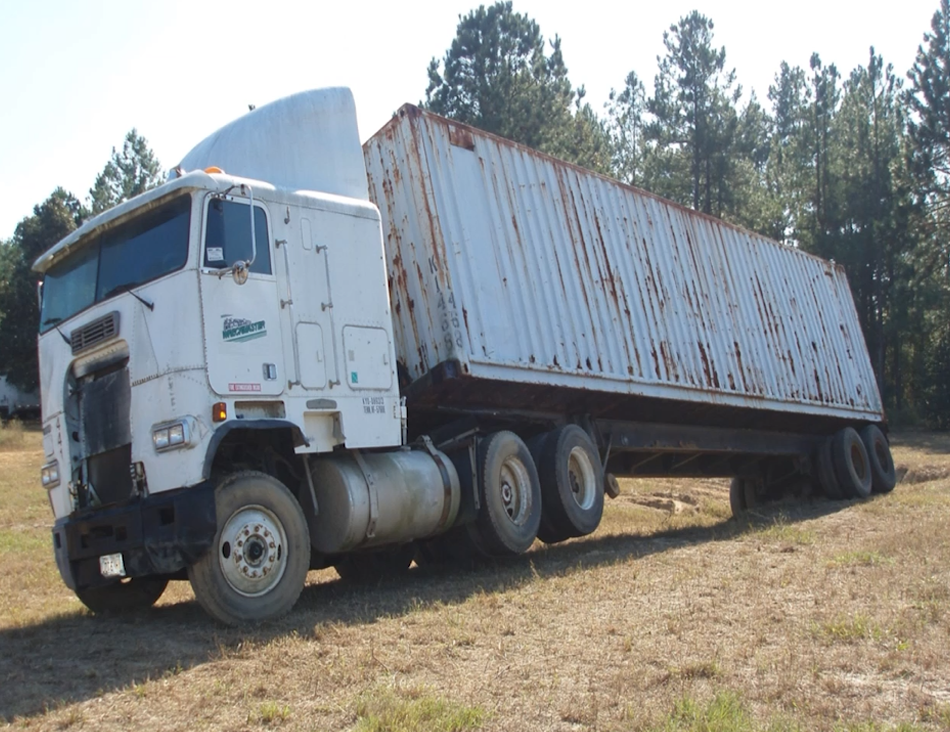
In this series of graphics you’ll see how to properly install the rigging to affect the tail wrap technique. The rigging is installed on the back of the trailer focusing the force at floor level. This point is critical. If the rating is raised higher than floor level on the back of the trailer, you could damage the rear door header or the door frame itself. It’s important energy transmitted through the recovery rigging, should be focused at floor level on the back of the trailer. One option for reading the tail wrap on the back of the leading trailer is going to be a 6×36 recovery strap. Whatever piece of rigging you choose, you should make sure that the rigging will remain within its working load limit while overcoming the casualties resistance.
In this series of photographs, you’ll see how the tow truck has been positioned to affect the leaning tractor-trailer recovery. For every foot away from the casualty laterally, the tow truck should be positioned 2 feet ahead. This 2:1 rule should be observed when positioning the tow truck to overcome the leaning casualties resistance. Oftentimes, in recovering a leading casualty a second tow truck is required. You as the operator are going to have to make the informed decision on whether this recovery can be completed with 1 tow truck or maybe a second is required. Remember the first job is to calculate the resistance. We do that to make sure that the rigging will remain within its working load limit, and that the tow trucks have sufficient anchor ability to wage the casualty forward. At all times ensure that your rigging remains within its working load limit.
